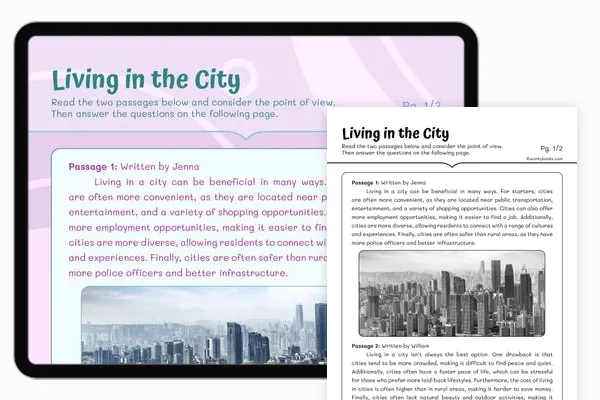The First Moon Landing — Reading Comprehension
Grades
- 4
- 5
Standards
- RI.4.6
- RI.5.6
PRINT+DIGITAL RESOURCE
This learning resource is available in interactive and printable formats. The interactive worksheet can be played online and assigned to students. The Printable PDF version can be downloaded and printed for completion by hand.
About This Reader
This passage juxtaposes Buzz Aldrin's firsthand recollection of the moon landing with a secondhand account from a New York Times article. The firsthand account offers a personal, sensory-rich description of the lunar surface and the emotional impact of the experience. In contrast, the newspaper article provides a factual overview, including specific times, the global audience, and the mission's historical significance. By comparing these accounts, students can identify differences in focus, detail, and perspective, developing critical reading skills and meeting CCSS.ELA-LITERACY.RI.4.6 requirements for analyzing multiple accounts of the same event.
Perfect For:
👩🏫 Teachers
- • Reading comprehension practice
- • Auto-graded assessments
- • Literacy skill development
👨👩👧👦 Parents
- • Reading practice at home
- • Comprehension improvement
- • Educational reading time
🏠 Homeschoolers
- • Reading curriculum support
- • Independent reading practice
- • Progress monitoring
Reading Features:
📖
Reading Passage
Engaging fiction or nonfiction text
❓
Comprehension Quiz
Auto-graded questions
📊
Instant Feedback
Immediate results and scoring
📄
Printable Version
Download for offline reading
🔊
Read Aloud
Voice-over with word highlighting













